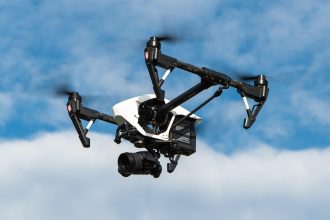Wearable Tech: From Fitness Trackers to Health Monitoring Powerhouses is transforming personal health, wellness, and medical innovation in 2025.
Technology is no longer confined to our pockets — it’s now on our wrists, around our necks, and even woven into our clothes. What began as a simple way to count steps and track workouts has evolved into a powerful tool for managing health. In 2025, wearable tech has transformed from basic fitness trackers into health monitoring powerhouses, capable of detecting diseases, predicting health issues, and saving lives.
This article explores how far wearable technology has come, what’s driving its evolution, and how it’s reshaping the future of personal health.
The Evolution of Wearable Technology
From Step Counters to Smart Health Companions
A decade ago, the first generation of wearable devices focused primarily on fitness tracking — counting steps, calories, and sleep. Brands like Fitbit, Garmin, and Apple popularized the concept of staying active through data.
Fast forward to 2025, and the landscape looks completely different. Wearable tech now provides real-time health monitoring, medical-grade data, and even early disease detection.
Key milestones in wearable evolution:
- 2010–2015: Fitness trackers enter the mainstream (Fitbit, Jawbone).
- 2016–2020: Smartwatches integrate heart rate and sleep tracking.
- 2021–2024: ECG, SpO₂, and stress monitoring become common features.
- 2025 and beyond: AI-powered wearables predict health risks before symptoms appear.
This shift marks a new era — where technology doesn’t just track activity, but actively supports better health outcomes.
The Core of Modern Wearables: Health Data
What Today’s Devices Can Measure
Wearable tech in 2025 goes far beyond step counting. These devices now gather vast amounts of biometric data, enabling users and doctors to make informed health decisions.
Modern wearables can monitor:
- Heart rate and rhythm (ECG tracking)
- Blood oxygen (SpO₂)
- Sleep cycles and quality
- Blood pressure trends
- Stress levels and mood patterns
- Body temperature fluctuations
- Respiratory rate
- Blood sugar (non-invasive glucose monitoring)
This real-time health data turns wearables into personal healthcare assistants — offering insights that used to require hospital visits.
AI and Machine Learning: The Brain Behind the Device
Artificial Intelligence (AI) plays a major role in transforming wearable tech into true health monitoring powerhouses.
How AI Enhances Wearables
- Predictive analytics: AI algorithms can detect irregular heartbeats, early signs of diabetes, or even the onset of depression.
- Personalization: Devices learn from your behavior to provide customized fitness and wellness recommendations.
- Smart alerts: Users receive real-time notifications for abnormal health readings or emergency conditions.
- Data sharing: AI simplifies how wearables transmit data securely to healthcare providers for continuous monitoring.
For instance, a smartwatch may detect an irregular heart rhythm and alert both the wearer and their doctor — preventing a potential cardiac event before it happens.
The Integration of Wearable Tech in Healthcare
From Consumer Gadgets to Clinical Tools
Once seen as casual lifestyle accessories, wearable devices have now entered the medical field. Doctors and researchers rely on data from wearables to monitor patients remotely, reducing hospital visits and improving chronic disease management.
Examples of healthcare integration:
- Remote patient monitoring: Patients with conditions like heart disease, diabetes, or hypertension use wearables for continuous health tracking.
- Telemedicine support: Real-time data enhances virtual consultations.
- Post-surgery recovery: Doctors can track vital signs and healing progress without in-person checkups.
- Clinical research: Wearables collect accurate, large-scale data for medical studies.
In hospitals and clinics, wearables have become vital tools for preventive care — detecting health issues early and promoting proactive medical intervention.
Fitness Meets Medicine: The Rise of Smart Health Ecosystems
Modern wearable tech is part of a connected ecosystem that combines fitness, wellness, and healthcare into one seamless experience.
Example of a connected health ecosystem:
- Your smartwatch tracks your workout intensity.
- Your smart ring monitors your sleep and recovery.
- Your connected scale measures body composition.
- An AI app integrates all this data and provides daily recommendations for nutrition, rest, and activity.
This unified approach empowers users to take full control of their physical and mental health — supported by personalized insights, not guesswork.
Wearables in 2025: Key Devices and Innovations
Let’s look at some of the most groundbreaking wearables redefining health technology this year:
1. Smartwatches and Fitness Bands
- Apple Watch Series 10, Samsung Galaxy Watch 7, and Fitbit Sense 3 now offer medical-grade sensors for ECG, blood pressure, and glucose tracking.
- They also integrate with AI-driven wellness platforms, giving users actionable insights instead of raw data.
2. Smart Rings
- Devices like the Oura Ring and Ultrahuman Ring Air offer continuous health monitoring with minimal intrusion.
- They track sleep, readiness scores, heart rate variability, and temperature changes, ideal for users who dislike bulky wrist devices.
3. Smart Clothing
- E-textiles embedded with sensors can track posture, breathing, and muscle activity in real time.
- These are being used in physiotherapy, sports training, and even early disease detection.
4. Smart Glasses
- AR-powered smart glasses now include health-tracking features such as eye strain monitoring and guided workouts.
- Integration with AI assistants enhances productivity and wellbeing.
5. Wearable Patches
- Skin patches continuously measure hydration, glucose, and other metrics non-invasively — a major step for diabetic patients and athletes.
These devices showcase how far wearable technology has advanced — blending comfort, design, and medical precision.
The Benefits of Wearable Health Technology
Wearable tech offers more than convenience; it’s empowering users to take charge of their health.
Top benefits include:
- Preventive healthcare: Detect potential health problems early.
- Motivation and accountability: Real-time tracking keeps users engaged.
- Personalized insights: Tailored recommendations improve lifestyle choices.
- Remote monitoring: Doctors can track patients anywhere.
- Emergency alerts: Automatic SOS signals during medical events save lives.
By merging health data with AI-driven analytics, wearable devices act as “always-on” health guardians for millions of users worldwide.




